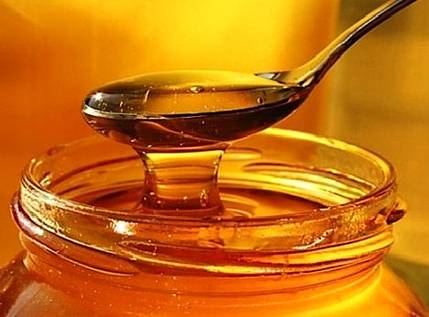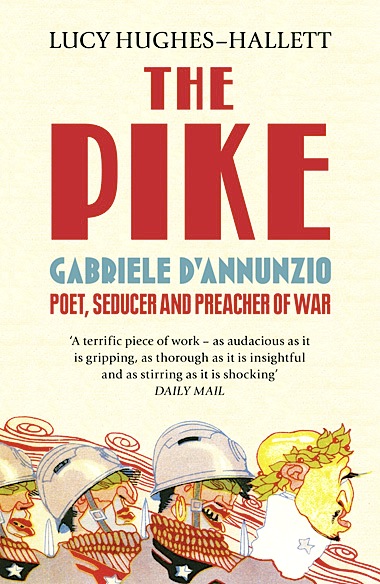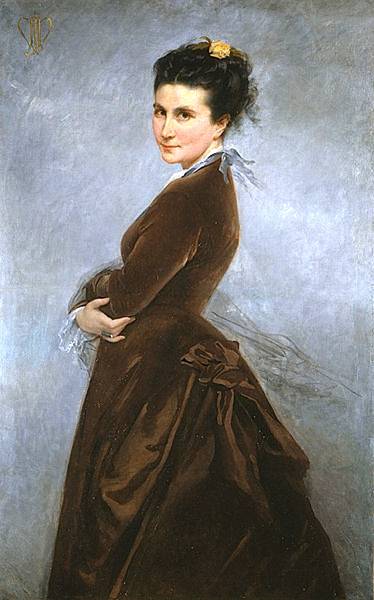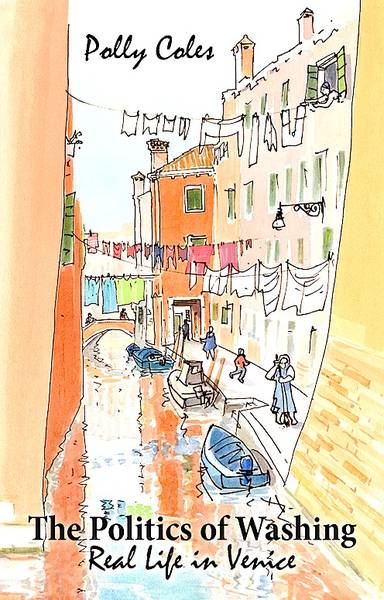W.D. Howells, Venetian Life, first published in 1866, and Polly Coles, The Politics of Washing: Real Life in Venice, Robert Hale, 2013.
A recent review of Polly Coles’ The Politics of Washing claimed that it was the most perceptive book on Venice since W.D. Howells’ Venetian Life. In a field that includes J.G. Links’ Venice for Pleasure and Jan (then James) Morris’ Venice, that is a bold claim for both of them but it gave me the excuse for reading Howells for the first time as well as exploring the ‘political’ challenge of how far a newly arrived resident can pull out their underwear (and which garments) on a backstreet (backcanal?) Venetian washing line.
W.D. Howells had worked for Abraham Lincoln’s campaign team and his reward was a year as consul in Venice, at that time under Austrian occupation. He is well educated and curious, but perhaps rather brash and impatient with a city where no one seems to do much. There is, for a sturdy Protestant such as himself, far too great a reliance on the Madonna breaking through the clouds and sorting out calamities and plagues. He soon settles into the routine, however, and when called upon to provide the annual report of ‘Commercial Transactions’ feels ‘a vague feeling of injury during a year of almost uninterrupted tranquillity.’ None of his compatriots seems to need his help and so he is free to observe daily life and to battle with the intricate personality of Giovanna, his housekeeper, she of the capacious pockets where unwieldy keys, lumps of beeswax, pictures of the Virgin and an illegible account book jostle with each other. Giovanni’s growing power over Howells and his wife is linked to the diminishing number of hours she attends them, but so entangled are they by her family and hangers-on that it is only by moving to a completely different part of the city that they can escape her web.
Howells was writing for an American audience, for most of whom Venice must have been a fantasy, and he exaggerates the picturesque and the ruffians. Yet he has literary skill and his account of arriving in Venice by night and his evocation of the coldness of a Venetian winter are haunting. Despite some good passages and insights, however, too much of the book is a mishmash: some history, interrupted by comments on the hierarchies of society, then a discussions of gondoliers, all of it without really penetrating what makes Venice survive as a city. His best chapter is perhaps his last, written seven years later when he was back in Massachusetts, where he describes how he camped out in lodgings in part of the Palazzo Giustiniani, in a fine position on the Grand Canal. One of the delights that all the male residents enjoy is swimming in the canal when the new tide brings fresh water. There is a more measured and reflective tone in this chapter, something that is often missing in the jumble of what has gone before. Overall, I would certainly rate Howells well below Morris, who is much more sensitive to the nuances of Venetian life.
In The Politics of Washing, Polly Coles, the English partner of an Italian violin-maker, cannot escape being totally immersed in the life of the city (in more ways than one as the floods intensify). There is the education system to negotiate for a start (the couple have four children) and she finds it distant and often sterile for her lively offspring. I never knew that there was quite so much Latin and Greek in the syllabus of the liceo classico. The conventions by which parents accept responsibility for their wayward children and apologise for them even though it might be the inadequacy of their teachers that is to blame is beautifully explored.
The fresh tides here are not those from the lagoon but from the massive influxes of tourists and much of Coles’ life is spent dragging her trolley through crowded streets and missing appointments because the vaporetti are too full for the residents to fit onto them. Coles shares my own belief that it is only in the early morning that one can fully appreciate Venice today. I really enjoyed this book, not only because Coles writes so well but also because she is sensitive to the people, both native and foreign, who surround her all too closely on a daily basis. How far can one risk one’s partner’s Y-fronts fluttering down into one’s neighbour’s garden and what would be the social consequences she would have to live with if they did? What are the conventions in using ‘tu’ and ‘lei’ a) in a conversation with a friendly Italian woman 20 years her junior and b) during a blazing row with her partner when ‘lei’ seems justified to express distance and disdain but turns out to be so inappropriate that it makes him collapse into laughter?
No one should go to Venice without reading this book as it will, perhaps, make them more aware that beyond the burger bars and overpriced pasta, there are people who have known the city since birth but have now become strangers in it, as the privates spaces and the traditional shops that used to serve them dwindle. Though Coles is a newcomer herself, she acts as a sympathetic champion of those who are being pushed to the margins by the cruisers depositing their ‘See Venice in two hours’ crowds. Their social network soon tells them exactly how alta the acqua is, which passageways are still open and where one can browse books in one’s wellies (stivali impermeabili), as the less nifty tourists flounder about in the swirling waters. As the artificially contrived Carnival gets under way in Piazza San Marco, the rowing clubs set off in the opposite direction, with Coles and her friend Jane negotiating a flat-bottomed sanpierota crammed with flags and children, to what is essentially a retaliatory fancy-dress village fête for the locals.
Less visible are the other residents, those who have drifted in from the east to work as carers, and who have only each other to sustain themselves now that children and family are far away. They are the new representatives of the East, the Schiavoni of the 21st century, a reminder that Venice has always been awash with foreigners—although most now stay only long enough to buy their Carnival masks and gelati before clambering on board their cruise ships again. This is a sobering book in many ways, a narrative of a self-destructing and sclerotic city where the ancient landing-posts are all too often submerged. I am happy to place it alongside James Morris’ own memoir of living with a family in Venice in the 1950s (now reissued and updated by the author)—but what a difference sixty years has made to the magic of the city.
Reviewed by Charles Freeman










